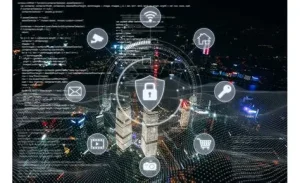Insurance in System: Building Security Through Structured Protection
Insurance in System

Insurance is an important means for the safety of property, companies and individuals against monetary risks for a long time. However, there is a big picture: insurance in the system, which is beyond policies and claims. This idea suggests how insurance involves insurance in a large organizational, financial and economic structure to provide stability and adaptability. It is important to reduce and guarantee insurance systems that the risk is adequately managed, whether in the areas of banking, healthcare, technology or national economies.
Understand insurance in the system
Insurance is fundamentally about sharing risks. The premium is paid for a system by individuals or organizations, which then provides coverage for special damage. When the remedy is completed, insurance becomes a systemic security instead of only a private contract. This prevents unexpected conditions from increasing the entire regions or communities.
For example, in the healthcare system, insurance guarantees that patients can receive medical care without increasing significant costs. Insurance shields can endanger the stability of the economy due to damage to banks, investors and financial systems. Cyber insurance now incorporates weak systems against online attacks, ensuring that companies can overcome rapid disruption.
Role of insurance in economic systems
Economic development and insurance are closely related. This promotes investment and entrepreneurship by reducing uncertainty. The owner of a business, who has insurance for his operations, employees and assets, is probably going to take more risk and develop his company. At the national level, the insurance system guarantees that economies can act without damage to protect against epidemic and storms.

Additionally, insurance stabilizes financial systems. Food is prepared in the capital market through investment of premiums collected. In this sense, the insurance company serves as a risk manager and an important contributor in economic development.
Insurance in organizational systems
Insurance is often included in internal systems by organizations as a component of risk management plans. This can include:
Benefits for Employees: Including Human Resource System for Health and Life Insurance.
Operations Safety: The scheme includes professional blockage insurance continuity.
Compliance: Insurance complies with rules and laws.
When properly integrated, insurance becomes an organic component of an organization’s operating system, which supports the morale and financial flexibility of the employees.
Insurance in technical systems
The insurance system now works with additional layers due to the digital age. For the management of claims, insurance processes are being supported by state -of -upart techniques such as Artificial Intelligence (AI), Big Data and Blockchain. In particular, cyber security insurance has become a new column in the digital system, which protects companies from system failures, data violations and cyber attacks.
Technology-competent insurance integration allows organizations to automate processes, identify fraud activity, and customize coverage to meet the needs of individuals or businesses.
Issues with insurance systems
Despite its importance, there are difficulties in including insurance in large systems. There are problems of awareness, access and power in many places. In addition, systemic risk such as global epidemic or climate change stress insurance systems.
final thoughts
Insurance is a unique aspect of contemporary life and more in policies and more than payment. By integrating insurance in healthcare, finance, technology and organizational structure, society becomes more flexible, people are protected, and businesses get confidence to innovate and expand.

Insurance systems should be modified to ensure that safety is strong, organized and long lasting as the risks develop in quick changing worlds.




